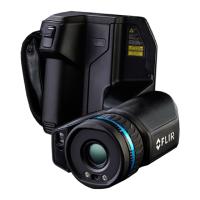The secret to a good thermal
image
33
33.1 Introduction
The use of thermal cameras has spread to many professional environments in recent
years. They are easy to handle, and thermal images are quick to take. Images can also be
attached to reports easily, e.g., for an inspection of an electrical installation or building as
evidence of work carried out or of any faults or deviations identified. However, people often
forget that an image to be used as evidence or even proof before the courts must meet
certain requirements: this is not achieved with a quick snapshot. So, what characterizes a
really good thermal image?
33.2 Background
During the practical exercises in our thermography training classes we notice, time and
time again, how difficult some participants find choosing the optimal camera settings for
different tasks. Not everyone has a background in, for example, amateur photography
(more on the difference between thermography and photography in the next section), and
to take a good and meaningful thermal image you need some knowledge of photography,
including its practical application. For this reason, it is hardly surprising that thermogra-
phers, particularly those without training, repeatedly produce reports with thermal images
that are devoid of meaning or even support the wrong conclusions and are fit only for the
waste bin. Unfortunately, such reports are found not only in companies in which thermog-
raphy is more of an added bonus but also in businesses where these reports may be part
of a critical process monitoring or maintenance program. There are two main reasons for
this: either the users don't know what a good thermal image is or how to take one, or—for
whatever reason—the job is not being done properly.
33.3 A good image
As thermography and photography are related, it makes sense to take a look at what is im-
portant to professional photographers. How do they characterize a good image? Three as-
pects can be pointed out as the most important:
1. An image has to touch the observer in some way. That means it needs to be unusual,
striking, or unique, and has to arouse interest and, depending on the genre, emotion.
2. The composition and balance must be in harmony; the image detail and content must
go together aesthetically.
3. The lighting must be interesting, such as back lighting or side lighting that casts dra-
matic shadows, or evening light or other pleasing illumination—whatever fits the overall
effect that the photographer wants.
To what extent can these concepts be applied to thermography?
With thermography, the motif should also be interesting. In other words, our aim is to de-
pict an object or its condition. Emotions are not required—facts have priority in thermal im-
ages (assuming they are not an art project!). In everyday working life, it is important to
illustrate thermal patterns clearly and to facilitate temperature measurements.
The thermal image must also have suitable image detail and display the object at an ap-
propriate size and position.
Without external illumination, neither visual sight nor photography is possible because
what we see with our eyes or capture with a camera is reflected light. In thermography, the
camera records both emitted and reflected radiation. Therefore, the relationship and inten-
sity of the infrared radiation, both emitted by the object and by the surrounding environ-
ment, are important. Brightness and contrast in the image are then adjusted by changing
the displayed temperature interval.
#T810253; r. AA/42549/42549; en-US
197

